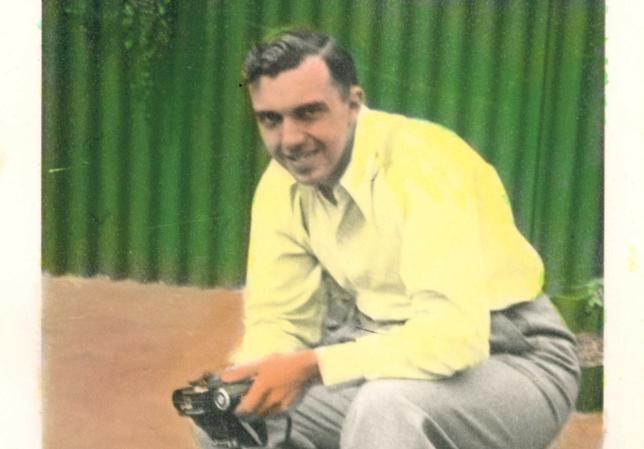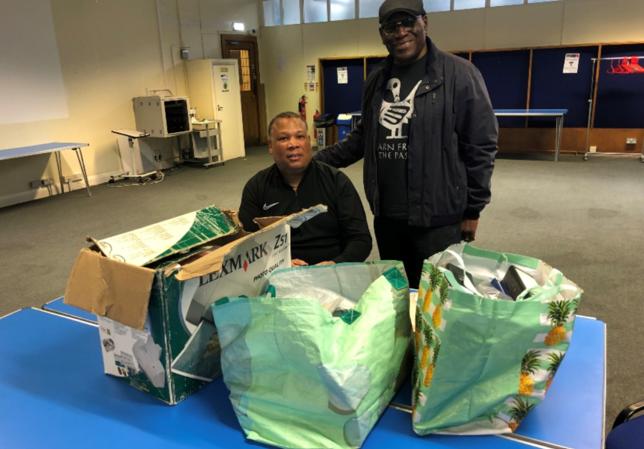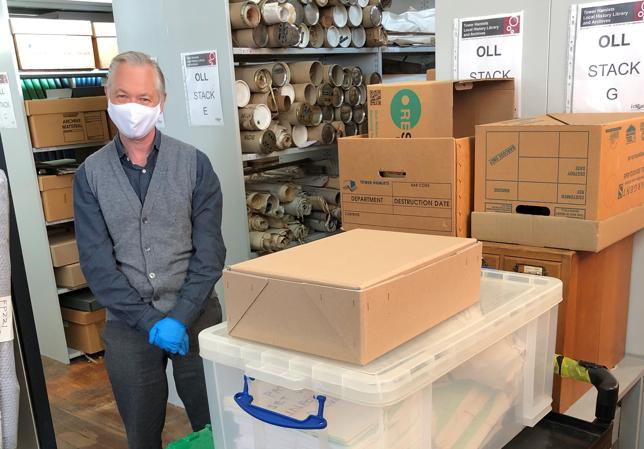Caring for your Collections: Community Archives
We all have documents, some have historical value. This guidance is to help you treasure your items and think about future actions to help safeguard them for generations to come.
This is a new guidance addition to our website in 2023. We value your feedback. Help us improve this guidance, and read our policy on depositing your records.
Explore common scenarios for best practice on caring for your own records. We have also included three case studies.
Common scenarios
- I work in a charity and found some old files in the cupboard what should I do? See ‘What should I keep?’ & ‘Organising your records’
- As I’m getting older, I am thinking more about what to do with my records as my children aren’t interested in history. What can I do with my photographs? See ‘Storing your records’ & ‘The Future of your Records’
- I have to clear out my folder on the computer have no space. My photos on my iPhone. See ‘Digital Records’
- I’m leaving my social media provider what should I do with my images? See ‘Digital Records’
1) Archives are collections of unique records kept for historical reasons rather than the purpose they were created. These collections are collected by and document the activities of individual(s) and/or group(s). Archives are preserved as originals for future public access.
2) The term archives can also be the name of a specialist physical or virtual space that holds more than one collection of archives.
Examples of archives can be records of an individual, a family, school, an organisation or a group.
Archival records can consist of:
- Meeting minutes and reports
- Diaries
- Correspondence, such as letters and emails
- Registers and ledger books, spreadsheets
- Annual financial records
- Promotion material, such as leaflets, newsletters, newspaper cuttings and event material
- Publications created by the organisation such as pamphlets, books and digital resources
- Photographs including slides
- Plans and drawings
- Audio-visual material such as films and sound recordings
‘They are our recorded memory and form an important part of our community, cultural, official and unofficial history.’ The National Archives
Many of us do not realise how important our archives are to local history and the potential they have.
- Records of local communities give us a unique picture of decisions made by and experiences of those living at the time.
- Archives are historical evidence that events happened.
- All archives no matter how small can contribute to local history.
- Archives provide documented evidence of activities of human society. If we didn’t have archives so much of history would be lost!
- It important that we have evidence of the lives of local people. You do not have to be famous or a celebrity for you archives to be of value. Archives needs records to accurately represent the diversity of people living at the time.
There are gaps in our archive collections which we are keen to collect. Examples are:
- Businesses – records of businesses unless companies are large or well-known rarely end up in an archive. Archives of a shop you find on the high street are valuable as they document economics, commodities, trading and demographics in an area at the time.
- Ethnic Groups and Migrant Communities – records include those of the Bengali community. Other communities such as Black African Caribbean, Chinese, Somali, and Vietnamese are less well represented. Highlighting the value of these communities’ records will improve historic representation.
- Social Activities – records that document music, hobbies, community events, social gatherings, and the everyday lives of residents.
Provenance
Provenance is an important term relating to where archives came from. Who created, kept and/or owned these records? How and where were they kept? This information is as valuable as the records themselves. Provenance gives context, assists with ownership and shows how the records used at the time they were created. Sometimes personal archives contain records of individual’s businesses, organisations and groups.
Original Order
Keep archives in original order. This will help reflect how they were created, kept and the purpose the documents served. The best way is to keep documents in existing folders where they make sense. Original order helps preserve provenance and archives' authenticity as evidence of the past.
Safeguard records and maintain them appropriately. This will help ensure they can be made available for future access. Simple steps include:
- Handle records as little as possible
- Examine records for damage before handling them
- Make space to lay out records
- Handle with care with clean hands
- Use gloves for photographic records. Your fingers can damage the surface
- Turn pages at top right side
- Keep loose items in order by turning them over in sequence
- Only use a pencil for making notes
Think about the records that are found in archives. Examples are:
- Meeting minutes and reports
- Correspondence
- Diaries
- Registers
- Publicity material
- Photographs
- Plans and drawings
- Audio-visual material (films, tapes, oral history)
Deciding what to keep or what to dispose of can seem a daunting task. Disposing of items is a good thing if it is no longer needed and has little historical value. Seek advice if you are unsure. A few things to consider when sorting through your records.
1) If you have more than two identical duplicate copies of an item, consider disposing of them. For example, having more than one copy of a publicity flyer is good in case the other is damaged.
2) Financial records such as receipts and invoices over 7 years old that are no longer required. Especially if they are summarised in higher level financial records such as account books and annual reports.
3) Some records containing personal information about living people should not be kept longer than they are needed. Legislation requires data about people should be limited to the use. For example, out of date mailing lists with contact details should be destroyed. Other records such as registers and minutes with personal details can be kept for historical reasons. This is termed ‘archiving in the public interest’. Access to these records is restricted according to data protection.
Begin by boxing up records you intend to keep. Prepare to list the items in each box. Label boxes with a pencil. Never use sticky notes or labels on the records themselves as may cause damage. Use paper slips to label bound volumes (e.g. photo albums).
Things you need:
- Boxes, pencils and paper
- Clean hands and space in which to sort your records
- An extra pair of hands for manual handling, when lifting heavy items
- List giving descriptions to box contents
Example of box list
|
Box No. |
Title |
Extent: No of items |
Contents |
Dates |
Notes on condition |
|
001 |
East End Festival |
1 envelope of 5 items |
Loose Photographs |
Apr 1992-May 1993 |
Tears in corners |
When boxing and listing make sure you:
- Avoid using paper clips, metal clasps or ties. These can distort and damage the items
- Avoid repairing items with sticky tape or glue as this can damage them
- Never laminate original items
- Respect the original order of the records. Do not separate items that make sense when kept together (think of their provenance!)
- Try to keep your records boxed in sturdy cardboard boxes with lids. This reduces exposure to dust, dirt, pests and environmental changes in the room. If you have the resources purchase archival boxes which buffer acidity levels.
- Do not over fill your boxes as this can pose a risk to the contents. It can be a safety hazard when handling.
- Avoid using plastic boxes as they restrict air flow through the records and can cause a build-up of micro-organisms.
- Never re-use boxes that have stored food, as this can attract unwanted pests
- Always use gloves to handle photographic items. This protects their surface from moisture from your fingers. Photographs can be stored in archival polyester sleeves to avoid damage from handling (Brand names include Melinex, Mylar and Polymex)
- Keep original packaging where you can such as folders as they can be meaningful to the original order and content

Case Study One : Stan Jones Archive
Background
Stan Jones was a resident of Mile End his whole life. At 91 years old he passed away in 2021. Stan’s neighbour was aware that he had a large collection of photographs, as he had enjoyed taking photos as a hobby. Stan’s ollection included those taken of his home during Queen Elizabeth II’s Coronation in 1953 and subsequent Jubilee celebrations. They have historic value as they document local celebrations and community life. The family were also aware of the value of Stan’s photographs and contacted Tower Hamlets Local History Library & Archives for further guidance on depositing.
Outcome
Our archivist surveyed the records in the house and helped the family identify other documents. Photographic material was deposited along with other papers in 2022. There was also a successful National Lottery Heritage Fund bid by local neighbourhood group to digitise selected items. This included a display and exhibition at THLHLA marking the Queen’s Platinum Jubilee. The exhibition has also been displayed at other community sites including Toynbee Hall.

Case Study Two : Tower Hamlets African & Caribbean Mental Health Organisation (THACMHO) Archive
Background
THACMHO is a community partner of Tower Hamlets Local History Library & Archives. The group began in 1996 supporting the mental health of black people in Tower Hamlets. They have been actively involved in local heritage projects including family history and mental health events. They annually contribute to the Black History Month programme. They have also been key to the the development of The Museum of London Docklands, Sugar & Slavery exhibition. THACMHO is also keen to ensure archives of groups survive for posterity and legacy for future work by younger generations.
Outcome
They deposited minutes, correspondence and event papers and flyers at THLHLA. A volunteer project supervised by our Archives Manager has enabled sorting and cataloguing of the collection. The deposit helps diversify archives collections representing the Black African & Caribbean community.

Case Study Three : Play Association Tower Hamlets (PATH) Archive
Background
The Play Association Tower Hamlets (PATH) was a charity established in 2001 to support play providers in the Borough. PATH's guiding ethos was that every child should have the right to a safe space to play. They worked with partners to create outdoor play areas with fun events and activities for children so they had the freedom to express themselves through play.
Reduced funding made the charity more difficult to sustain. The effects of the covid-19 pandemic and related restrictions meant that the trustees had to take the difficult decision to close the charity in 2020
Outcome
After the organisation was dissolved there was no ongoing storage solution for the records. PATH’s Play Development Manager was aware of THLHLA through past community projects. They deposited minutes, reports, photographs and artwork including a hard drive of digital documents in January 2021 to safeguard them for future access.
Most records are now created in electronic format and are born-digital. Understanding our digital records can seem a little complex. Digital records are as important as physical ones and form part of an archive. Some records are created in obsolete file formats and saved on devices that may not be accessible for future use (e.g. floppy disks).
Digital records can come in a variety of formats, including
- Emails
- Word and PDF documents
- Social media posts
- Webpages
- Google documents
They can be stored on different carriers and places, especially if you have been collecting over some time.
- CDs/DVDs
- Floppy disks
- External hard drives
- USB
- Organisations’ servers, your laptop, the Cloud
Organise digital records in the same way as you order the physical ones.
- Keep folders and file titles where they make sense
- Think about viruses or your laptop dying. Make at least two regular backups. One at a different physical location e.g. the Cloud
- Check the data about files e.g. date created or last modified. This is what you see in File Properties and is known as metadata. Make sure this doesn’t change when you move or copy records from one place to another. Ensure you save these files as a word as a PDF document
- Make a record of where digital items are stored
- For images, save a copy as JPEGS. This makes them most accessible format and records the date of creation
- Use external hard drives to make space on your computer and mobile devices
- Check your social media provider’s information around downloading data to your folder
When you identify what records you intend to keep it is important to think about how to care for these records. This will prevent damage, deterioration and keep them in better condition for longer. Think about the environment you are storing your records and about possible risks.
Managing Risks
- Clean and tidy storage area
Dust and dirt can cause irreversible damage to records. If you are storing your records at home, consider a place that you can easily clean regularly.
- Room temperature and Humidity
The best condition for storing your records is a cool, dry place. Avoid places with sudden changes in temperature, or which become too humid. Keep items especially films or photographs in cardboard boxes and check them regularly.
- Risks of Fire
Ensure that the location of your records is away from open fires, stoves, electric heaters and radiators. This also includes master switches and electrical circuits as electrical fires are a risk. Do not attempt to heat the area to regulate temperature. Try to store records in a place that has a temperature that self-regulates. Also ensure that the space has a smoke detector fitted, and make sure you know how this works.
- Risks of Flooding
Store your records in a place that is at least risk of water damage. Records stored in basements or attics are at more risk of water damage. Both locations can suffer leaks, sudden changes in temperature and humidity. Store records off the floor with adequate shelving. This lowers risks of low-level water rising. Avoid storing records in areas with plumbing, pipes or boilers.
- Security risks
Think about where they are kept. Who has access? Is the room easily accessed? Keep records, especially confidential items in a secure location that can be locked. Avoid theft or unauthorised access to your records. Digital records ensure anti-virus software is installed, make regular backups.
Personal and confidential information
- If you have records that contain sensitive information about living individuals, it is important you keep this information safe and secure. Details could include matters relating to their personal relationships, health and employment issues, membership and financial arrangements. Do not share with third-parties unless depositing for archiving in the public interest. This is a requirement under data protection legislation. If you are unsure keep access to these records restricted and seek guidance (helpful links below). You do not have to remove, redact or destroy all records that contain personal information. Keeping them safe from unauthorised access.
Making digital copies
Digitisation is another way you can preserve your physical records. This involves scanning or making a digital copy of these records to preserve either on a hard drive or ICloud storage. Making digital copies of your records means that you can also share with family and friends. This also means that the originals can be kept together, and collections are not separated amongst family members. Also it is a good way to ensure that there is more than one copy of your records. The digital copy does not replace how valuable the original record is so managing risks to physical items is still important.
You have several options when it comes to the future of your records. Many choose to keep the records and later pass them on to family members. Within organisations, records are normally passed to successors.
You can also deposit your archives. Seek advice from an archivist in a local archive like us. They can help advise you on how to manage your records in the long-term.
Depositing your records may be a good option for you if you
- can no longer store or care for them
- want them to be more accessible to researchers.
Depositing with an archive may mean that your records receive specialist care. Items including photographs, films and sound recordings may need extra resources for future preservation.
Your collection may be relevant to more than one place of deposit. Archives will help advise you which may be best suited for you to deposit your archives.
- The simplest way to transfer your records is as a gift. Ownership and use of the collection can be maintained by the archive service.
- You can deposit your records con long-term loan. This may work especially where you are active or where an organisation is still active. Decisions around transfers are normally agreed by the Board and made by the trustees, directors and secretary.
When depositing with an archive it is important to discuss your copyright to the records. This is important for those records that have been produced or written by the records owner.
Other resources
Explore useful links for more resources on caring for your own records at home or in a community space:
